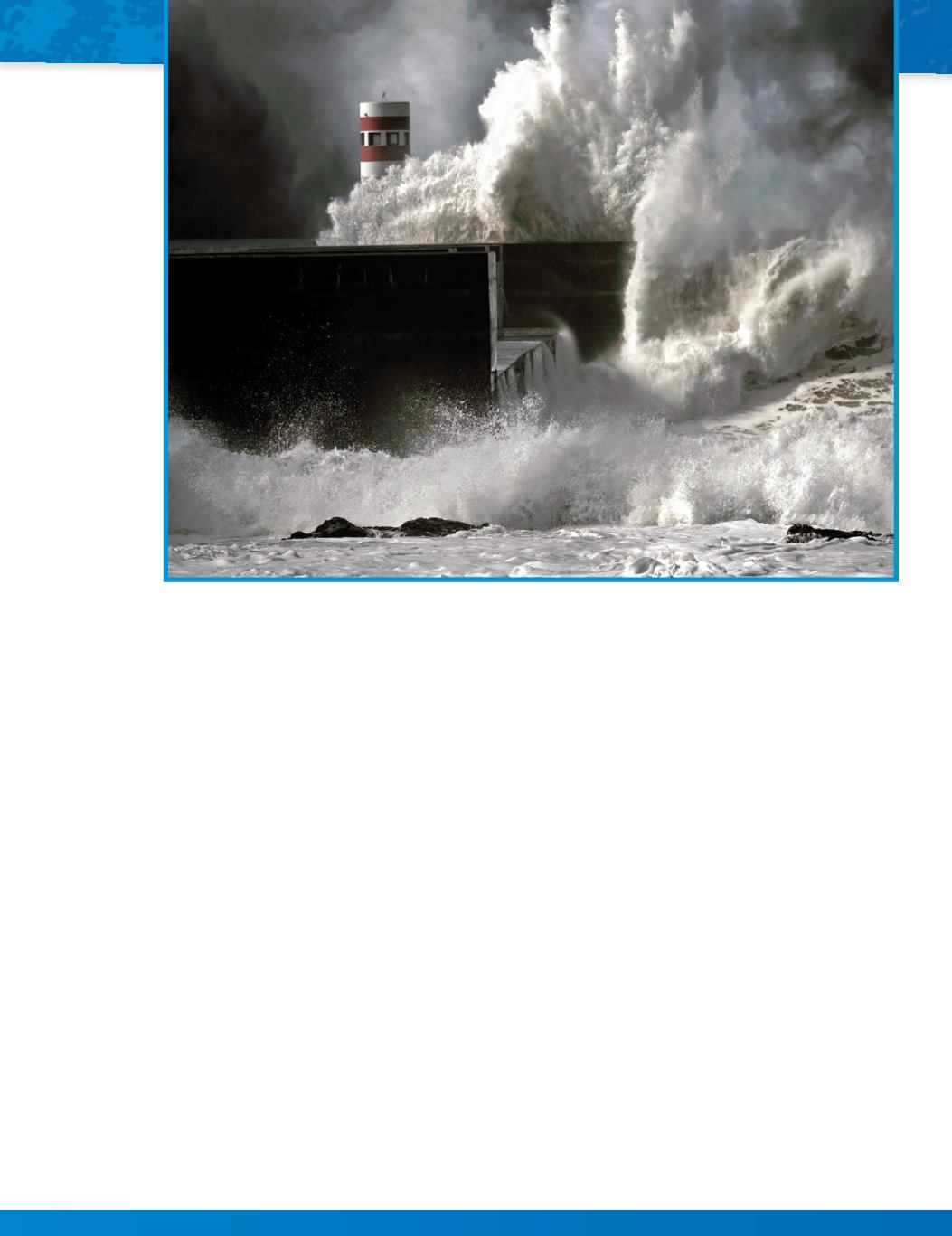

A storm surge can produce huge waves that flood coastal areas.
Rivers aren’t the only sources of flood hazard. Ocean water is subject
to tides. Every day the tide comes in and then goes out. When the
highest tides flow in, low coastal areas might flood a little bit with
sea water. But when large tropical storms come near shore, the strong
winds can blow an extra load of sea water up onto the land. This kind
of flood wave is called a
storm surge
. A storm surge wave can be
several meters high. The surge can push water into towns along coastal
areas. It can destroy buildings and leave several meters of salty water
on the land.
Again, one of the best defenses against this kind of flood is a
wetland. Wetlands exist along many parts of the coast, particularly
at the mouths of rivers and creeks. Rushes and reeds, mangrove and
cypress trees, and salt-tolerant grasses grow in the wetlands. These
wetland plants form a natural barrier against the rushing surge water.
Slowing the surge waters reduces the height of the surge. It reduces
the force of its impact. And the wetlands limit how far the water flows
inland.
59









